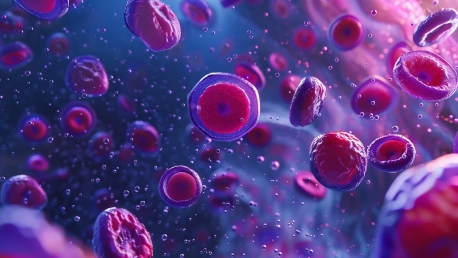In the ever-evolving landscape of medical treatments, cell therapy emerges as a vivid illustration of how cutting-edge science can unlock new horizons in healthcare. This article delves into the transformative world of cell therapy, highlighting its current state, potential, and the multifaceted challenges it presents.
The Emergence of Cell Therapy
The Evolution and Foundation of Cell Therapies
The seeds of cell therapy were sown with bone marrow transplants more than half a century ago, marking the dawn of a revolutionary era in medical treatments. Since then, the science has taken leaps forward, with researchers exploring the potential of transplanting live human cells into patients to repair damaged tissues and directly target diseases. This innovative approach is divided into autologous therapies, which use the patient’s own cells, and allogeneic therapies sourced from donors, each with their unique set of possibilities and challenges.This foundational work has evolved considerably, forming the basis of new therapies that hold promise for not only cancer but a plethora of diseases that until now had limited treatment options. The resilience and regenerative capacity of human cells have become the cornerstone of personalized medicine, pushing the boundaries of what we once thought possible in treating the intricate tapestry of human ailments.
FDA Approvals and the Clinical Landscape
A surge of FDA approvals serves as a testament to the burgeoning field of cell therapies. With 27 cell therapies already sanctioned for public use, primarily for cancers and various metabolic and immune system disorders, the confidence vested by such regulatory bodies underscores the advancements and potential of this field. Moreover, the landscape is rich with clinical trials, with over 1,600 trials underway, harnessing the intricate biology of human cells to fight a wide spectrum of diseases.The diversity of cell therapy applications stands as a beacon of hope for patients with conditions that previously had few remedies. Each FDA approval, each positive outcome from these clinical trials, paves the way for a future where cell therapy is a household term, synonymous with life-enhancing and life-saving medical treatments.
Breakthroughs in Cancer Treatment
The Rise of Immunotherapies and CAR T-Cell Advances
Immunotherapy has revolutionized the way we see cancer treatment. Among the most groundbreaking are CAR T-cell therapies, which entail reprogramming the patient’s own immune cells to recognize and attack cancer cells. The FDA’s approval of treatments like tisagenlecleucel in 2017 highlighted the potential efficacy of these therapies for younger patients with acute lymphoblastic leukemia, turning the tide in the battle against blood cancers.These therapies involve a sophisticated process where T cells are genetically modified to enhance their ability to detect and eliminate cancer cells. This innovative treatment encapsulates the remarkable potential of cell therapy in harnessing the body’s natural defenses to target malignancies, offering hope for more effective and personalized cancer treatments.
Current Challenges and Developing Solutions
While CAR T-cell therapies herald a new dawn in oncology, they are not without their trials. Antigen loss can lead to cancer recurrence, and the therapies’ efficacy against solid tumors is still under scrutiny. To address these challenges, the scientific community is actively engaged in developing multi-antigen targeting CAR T cells, studying natural killer (NK) cells, and augmenting these with oncolytic viruses.The FDA’s recent approval of the first tumor-infiltrating lymphocyte (TIL) therapy for metastatic melanoma showcases a fresh approach to treating solid cancers. Leveraging the body’s immune response to cancer neoantigens shines a light on the path forward, providing renewed optimism for reaching previously untreatable malignancies.
Stem Cells and Regenerative Medicine
The Potentials of iPSC Technology
Induced pluripotent stem cells (iPSCs) hold the keys to unlocking personalized regenerative treatments. They represent a transformative leap forward owing to their ability to differentiate into any cell type. This characteristic opens avenues for individualized therapy, particularly for conditions caused by the loss of specific cell types. iPSCs are like chameleons of the cellular world; they can become heart, brain, or pancreatic cells, holding immense promise for diseases that were previously thought to be incurable.This technology bears the hope of a new age in medicine, where damaged organs can be healed from within, where genetic disorders could be corrected before they manifest, and where the dream of regenerative medicine becomes a shared reality.
Overcoming iPSC Challenges
Despite the promising horizon, iPSC technology faces significant scientific hurdles. Ensuring these cells safely and accurately differentiate into the desired cell types in the clinic is still a major concern. Yet, the rapid pace of technology—with new biotechnological tools and machine learning algorithms—plays a crucial role in navigating these challenges.Advanced technologies are key to enhancing the safety and efficacy of iPSC-derived treatments. They offer novel ways to monitor and direct the differentiation of these cells, often mimicking the natural conditions of human development. Each stride made in this domain brings us closer to reliable and safe iPSC therapies that could one day eliminate the need for organ transplants or lifelong medication.
The Manufacturing and Regulatory Arena
Production Intricacies and Innovations
The production landscape for cell therapies is anything but simplistic. Given the delicate nature of living cells, manufacturing processes are critical to the success and potency of these therapies. The industry is bustling with innovation as processes become shorter, less manipulative, and geared toward preserving the robust nature of immune cell therapies.The current trajectory is toward self-contained systems that could allow for the production of cell therapies within the walls of a hospital, simplifying logistics, and potentially improving patient outcomes. Such advancements in manufacturing are not only scientifically exciting but also hold the promise of a future where life-saving cell therapies could be as accessible as traditional medications.
Navigating Regulatory Pathways
The novel terrain of cell therapies has prompted regulatory agencies around the world to adapt. Frameworks like the FDA’s Regenerative Medicine Advanced Therapy (RMAT) and EMA’s Priority Medicines (PRIME) initiatives have emerged to accelerate the review process, reflecting the unique nature of these treatments. Nonetheless, there remains an essential need for global cooperation to align regulatory pathways and standards to expand patient access.Expedited review paths are critical to meeting the challenges that stem from innovative cell therapies. As regulatory sciences evolve alongside medical advances, the possibility of streamlined approval processes grows, fostering a global environment where groundbreaking treatments can be delivered to the patients who need them most.
The Future of Cell Therapy
Expanding Horizons Through Research and Collaboration
The path ahead for cell therapy is constructed by the collaborative efforts of diverse sectors including academia, industry, and regulatory agencies. Their continued research and development are paramount in driving innovation and integration of these therapies into mainstream medical practice. This concerted commitment to advancement takes place in laboratories and clinical trials worldwide, with a shared goal of conquering complex diseases and enhancing patient care.The multidisciplinary research and industry partnerships are bolstering the discovery and optimization of new cell-based treatments. As these collaborative enterprises flourish, they will undeniably push the boundaries of what cell therapy can accomplish, cementing its role as a bedrock of modern medicine.
Anticipating Global Impact
In the dynamic realm of medical advancements, cell therapy stands out as a shining beacon, demonstrating the remarkable potential of modern science to redefine the parameters of healthcare. This groundbreaking arena, cell therapy, scrutinized in this article, aims to illuminate its status quo, prospects for the future, and the complex set of hurdles it faces.As we navigate the intricate world of cell therapy, it’s essential to understand that it’s more than just a new treatment option; it represents a fundamental paradigm shift in how we approach healing. With the potential to treat a wide array of conditions by repairing, replacing, or regenerating diseased cells, this method of treatment is opening doors to possibilities once thought to be the stuff of science fiction.However, the road to mainstream implementation of cell therapy is rife with obstacles. These range from ethical concerns and technical complexities to regulatory challenges and the need for a massive financial investment for research and development. Despite these hurdles, the medical community is making steady progress, fueled by the promise that cell therapy holds for countless patients.Thus, while cell therapy is currently at a nascent stage, its evolution is rapid, and its ability to transform lives is immense. Recognizing its potential and the challenges it entails allows for a deeper appreciation of this scientific frontier and what it means for the future of medicine.









